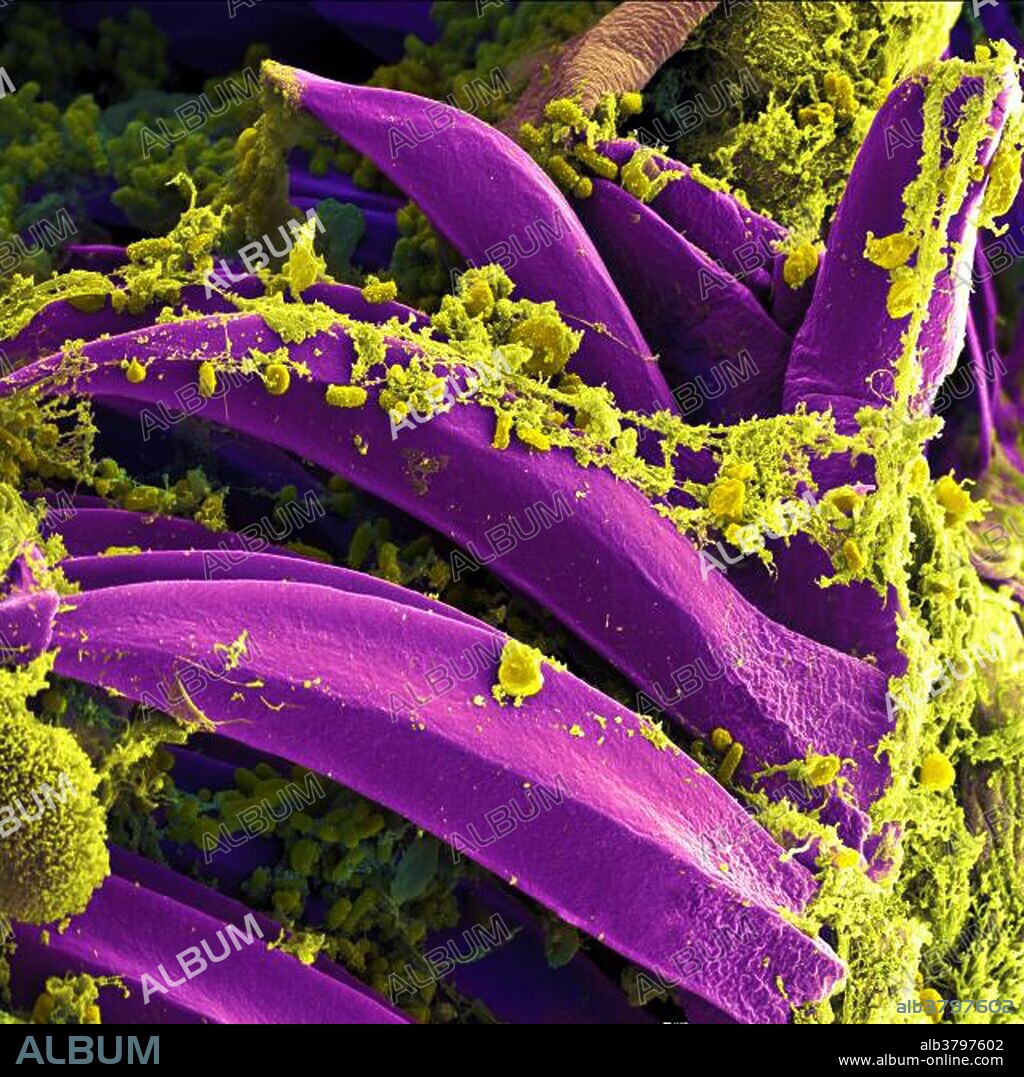alb3797602
Yersinia pestis Bacteria, SEM

|
Zu einem anderen Lightbox hinzufügen |
|
Zu einem anderen Lightbox hinzufügen |



Haben Sie bereits ein Konto? Anmelden
Sie haben kein Konto? Registrieren
Dieses Bild kaufen.
Nutzung auswählen:

Titel:
Yersinia pestis Bacteria, SEM
Untertitel:
Siehe automatische Übersetzung
Scanning electron micrograph of Yersinia pestis bacteria on proventricular spines of a Xenopsylla cheopis flea. Yersinia pestis (formerly Pasteurella pestis) is a Gram-negative rod-shaped bacterium. It is a facultative anaerobe that can infect humans and other animals. Human Yersinia pestis infection takes three main forms: pneumonic, septicemic, and the notorious bubonic plagues. All three forms are widely believed to have been responsible for a number of high-mortality epidemics throughout human history, including the Plague of Justinian in 542 and the Black Death that accounted for the death of at least one-third of the European population between 1347 and 1353. More recently, Yersinia pestis has gained attention as a possible biological warfare agent and the CDC has classified it as a category A pathogen requiring preparation for a possible terrorist attack.
Bildnachweis:
Album / NIAID/Science Source
Freigaben (Releases):
Model: Nein - Eigentum: Nein
Rechtefragen?
Rechtefragen?
Bildgröße:
3150 x 3150 px | 28.4 MB
Druckgröße:
26.7 x 26.7 cm | 10.5 x 10.5 in (300 dpi)
Schlüsselwörter:
 Pinterest
Pinterest Twitter
Twitter Facebook
Facebook Link kopieren
Link kopieren Email
Email
